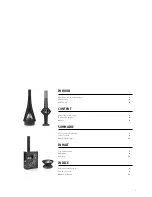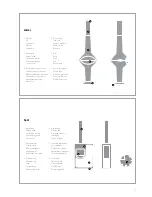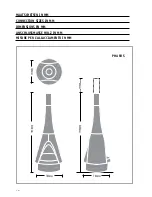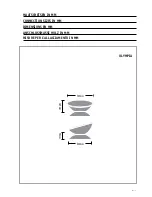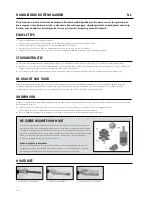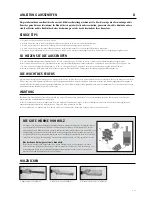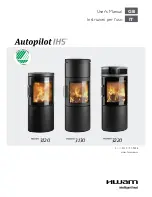
GB 9
We congratulate you on the purchase of your outdoor stove. This manual will inform you about the best way of using the stove and
the art of keeping a perfect fire. Your stove will behave differently according to the place where it is installed, simply because the
conditions are different. The weather and the quality of the wood largely determine your outdoor stove’s burning behaviour.
a few tIPS
• Place the outdoor stove on a solid ground.
• Ensure there are no objects or materials that are not fire or heat-resistant in the immediate vicinity of the stove.
• Use dry and clean wood. This obviously also applies to the paper and cardboard used for lighting the stove.
• Always keep a fire on a bed of ashes. This is an insulating layer for the fire and also an excellent bed for the fuel.
• Remove the surplus of ashes with a scoop. Never use a vacuum cleaner because a fire may still glow after extinction for days.
the fIne heat frOm wOOd
You have purchased a wood stove. In many respects, wood used as fuel is an ideal choice. But what
exactly is wood? Under the influence of sunlight, a tree builds up wood cells from CO2 (carbon dioxide),
water and minerals. So, in fact, wood is stored solar energy. In its growth process, the tree takes CO2
from the air and gives off oxygen in return. Also in terms of the environment, wood is an ideal fuel.
When it is left to rot, the same amount of CO2 is released as when it is burned. In environmental terms,
we then say that wood is ‘CO2-neutral’.
Only dry wood is stove wood
Not all wood qualifies as stove wood. Good burning is obtained by using wood that has been seasoned
for at least eighteen months. That is to say: preferably chopped wood that, stored under a shelter and
protected from the rain, can slowly let its moisture evaporate. Dry wood does not sizzle in the fire and
does not soot the glass.
manuaL OutdOOr StOveS
gb
1. kindling wood (± 2x2x30cm)
2. thicker wood (± 4x4x30cm)
3. solid log (± 7x7x30cm)
PreFerreD WOOD THIckNeSSeS
the POwer Of fIre
As a matter of fact just a few things withstand a real hot fire. Your stove can also be damaged by overheating. Just to prevent this take account of not burning more
than 4 kilograms of wood at the same time. 4 kg equals about 4 solid logs; ideally, the moisture content of firewood should not be more than 15%. The construction
and the used materials from the stove are suchlike chosen to control and resist a fire in a considered way. So heat with consideration.
maIntenanCe
The weather always has influence on your outdoor stove. After some time, some light rust may form on the steel parts. This is quite normal. In coastal areas the effect
of weather influences will be sooner noticeable.
1.
You can clean the stove using a non-fibrous cloth and lean soapsuds. Slightly damaged spots can be touched up using an abrasive cloth and special
heat-resistant stove paint. Ask your supplier for advice.
2.
It is advisable to grease the moving parts each year before the new heating season. Ask your supplier for advice.
hOw tO uSe the OutdOOr StOveS
1.
In order to increase the weather resistance of your outdoor stove, it is advisable to use the stove as soon as it is placed outside for the first time.
2.
Light the stove with paper, cardboard or firelighters and a fair amount of kindling wood. Stack lightly so that the flame can easily take hold.
Maintain a good fire for a while so as to ensure a good draught and a proper base for thicker wood (see log thickness).
3.
When the fire has been burning properly for a while, add some logs that are more solid. Stack lightly. The amount depends on the heat needed.



